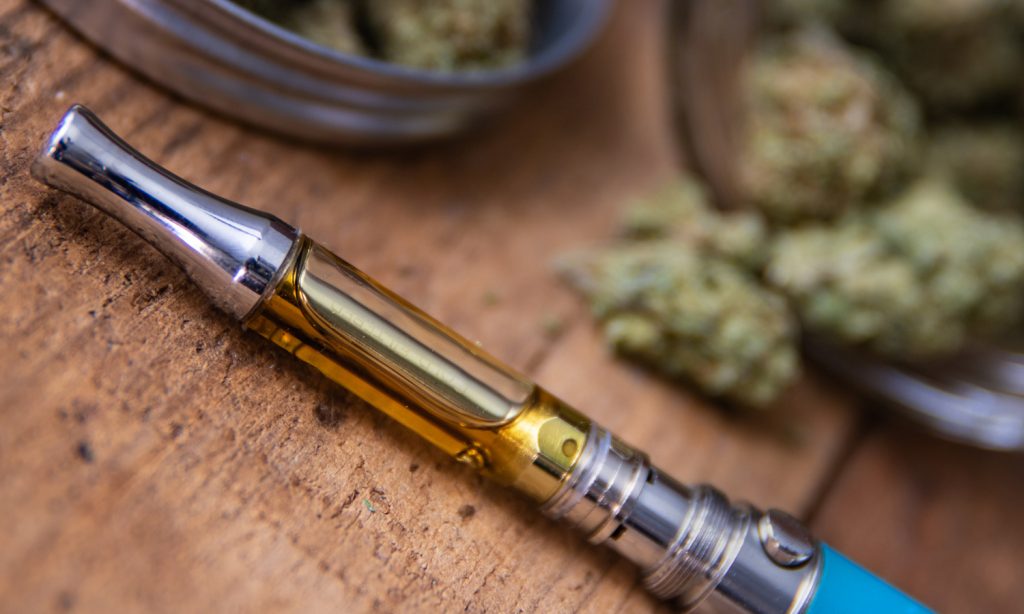
Does the increasing heat of a vape get you high?
As popular as vaping has become, it has a new audience who may not know all the nuances of the art of vaping. While gummy bears are the most popular, vaping has a large audience. That’s partly because it’s portable and not as flashy as a joint, bong, or bowl…so it’s a perfect evening accessory. But does the increasing heat of an e-cigarette get you high?
Choosing the best temperature to vape weed is one of the most unclear and questionable topics when dry vaping cannabis, but you can identify exactly which temperature is best to achieve your ideal effects. There is no single temperature for vaping weed that can be considered the best. The best temperature to vaporize your cannabis depends entirely on what effect you are looking for. However, it varies somewhere in the range of 160°C (320°F) and 230°C (446°F).
Photo by Atay Kabalo via Unsplash
Think of temperature control as a way to unleash the full effects of a strain. (be it gentle/mild, moderate or even intense). For example, a strain high in CBD (non-intoxicating, sedative, anti-epilepsy) should be warmed to the compound’s boiling point above 356°F, assuming you’ll get its effects. Likewise, the loosening terpene linalool is not released until you reach 388°F. Temperature can also determine the strength of a strain: higher temperatures often exaggerate the effect, while lower temperatures produce a finer, more consistent result.
When you change the temperature of your vaporizer, you’ll know the difference between a mild vapor and a heavy boil in real time. While smoking burns plant material, vaporization provides a gentle warmth to the cannabis buds.
Increasing and decreasing the temperature actually adjusts the quality of your high. This is why you buy a vaporizer that allows you to control the temperature. This way you have full control over your high and your cannabis intake.
Importance of the evaporator temperature
While some cannabinoids – compounds found in cannabis that can produce different effects in buyers – can tolerate higher temperatures, terpenes, the plant’s medicinal balms that give it taste and smell, cannot. In this way, vaping at a lower temperature produces a more scent-like taste, while a higher temperature produces more vapors and produces a more exceptional high.
The operation of these mixtures is essentially what allows the customer an encounter that is becoming increasingly easier to manage thanks to innovation.
Herbal vaporizers are designed to heat the flowers to the point where the trichomes begin to dissolve, converting the sticky fats from their strong structure into vapor or smoke vapor.
RELATED: 3 Differences Between Vaping and Smoking Marijuana
Trichomes are the tear glands of the cannabis plant. These glands are located on the outer layer of the plant material and are usually moved in the female marijuana flower. Trichomes are where the herb’s essential restorative and psychoactive blends reside.
Cannabis resins contain not only cannabinoids, including tetrahydrocannabinol (THC), the legendary “high” chemical, but also terpenes. The cannabis plant is made up of more than 400 chemical compounds, all of which have different boiling points and unique properties.
How Changing Vaporizer Temperature Affects Your High
Adjusting the temperature of your vaporizer affects your high in several ways. At a temperature of 290°F to 330°F, the vaporizer is just at the point where it begins to slightly melt the trichomes and then release a vapor (although barely visible to the naked eye). This gentle vapor gives you a bit of a feeling of cannabinoid and terpenoid therapy.
 Photo by martin-dm/Getty Images
Photo by martin-dm/Getty Images
At higher temperatures up to 445°F, a vaporizer will melt trichomes and also release a lot of THC, including other molecules. At this level there is a somewhat increased intoxication and the vapors are clearly visible. Temperatures above 445°F pose a risk of combustion, meaning that burning cannabis at high temperatures will cause the plant to burn.
RELATED: How to Make Sure Your Vape is Safe
The boiling point of cannabinoids and terpenoids also influences your high. Lower temperatures may not exhibit the effects of certain cannabinoids and terpenoids. Likewise, higher temperatures tend to cause the compounds to burn.
Below is a list of some of the boiling points of some cannabis compounds.
- THC: 314.6°F (THC-A 220°F)
- CBD: 320°F (CBD-A 240°F)
- CBN: 365°F
- CBC: 365°F
- THCV: 428°F
- Limonene: 350.6°F
- B-Caryophyllene: 246.2°F
- Linalool: 388.4°F
- Pinene: 312.8°F
- Myrcene: 332.6°F
Note that the boiling points of raw cannabis (THC-A) and THC are different. THC-A begins to boil at a lower temperature, but complete decarboxylation can occur at a higher temperature.
For this reason, high temperature evaporators provide a better response. If you want to keep it light, a lower temperature is recommended.
 Photo by HighGradeRoots/Getty Images
Photo by HighGradeRoots/Getty Images
Low temperature 290-330°F
Low temperature vaporization provides a milder, relaxed feeling. At this temperature range, the experience will be less soothing and you will likely notice more pine and pepper aromas. CBD and THC appear in the temperature range of 290-330°F, but you are unlikely to experience an effective high. This is the perfect temperature for better concentration, a better mood and for dealing with stress and anxiety.
Moderate temperature 330-370°F
The temperature range of 330-370°F gives you a distinct psychoactive feeling. This range is particularly recommended for cannabis users with sufficient tolerance. Terpenes and cannabinoids are found in this range and are recommended for those looking for a high that doesn’t necessarily interfere with your normal activities. This level is best for social gatherings.
High temperature 370-445°F
This temperature range is where users experience the highest high, significant pain relief, and sometimes sedation. It is recommended to use high THCV strains in this temperature range as the boiling point is higher than THC and CBD. The temperature range of 370-445°C provides the perfect cannabis high that recreational users crave.
The above temperature levels don’t really “make” the impact; they customize them. Remember that the limitations of your adjustment are determined by the load. Note that temperature expansions allow you to access more basic mixtures. Keep in mind that excessive heat may wipe out some of these delicate cannabinoids and terpenes.

Post a comment: